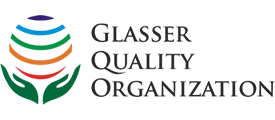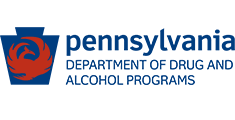The signs, symptoms, and effects of PTSD can be different for every person impacted. Learning about PTSD is one of the first steps towards getting better.
Understanding PTSD
Learn about PTSD
Posttraumatic stress disorder (PTSD) emerges as a result of exposure to an intensely traumatic event. When a person experiences a situation that presents a threat of death, injury, or serious harm, or witnesses harm or violence come to another person or a loved one, he or she is at risk for developing PTSD. Should a person develop this debilitating mental health disorder, he or she may struggle to keep up with the demands of everyday life and may experience a series of disruptive symptoms. Unfortunately, in an effort to manage these symptoms, PTSD sufferers sometimes turn to drugs and/or alcohol. While this approach may provide some short-term symptom relief, in the long term, a person may end up developing a co-occurring substance use disorder and find him or herself fighting a two-front war against both substance abuse and PTSD.
Cove Forge offers treatment for both addiction and co-occurring PTSD.
Statistics
PTSD statistics
According to the fifth edition of the Diagnostic and Statistical Manual of Mental Disorders, slightly less than 9 percent of people will be diagnosed with PTSD at some point in their lives. In a given year, 3.5 percent of adults meet criteria for PTSD. Unsurprisingly, rates of PTSD tend to be higher among those who work in high-risk vocations, such as military personnel, police, firefighters, and emergency medical personnel. Data from the U.S. Department of Veterans’ Affairs indicate that more than 20 percent of veterans with PTSD also have a substance use disorder, and almost 33 percent of veterans who are seeking treatment for substance use disorders also have PTSD.
Causes and Risk Factors
Causes and risk factors for PTSD
By definition, PTSD has an environmental cause since it arises in response to experiencing a traumatic event. However, not everyone who experiences a traumatic event will develop PTSD. Certain genetic and environmental factors, including the following, can influence a person’s chance of developing the disorder:
Genetic: People with certain genetic profiles, or genotypes, can have a higher or lower risk of developing PTSD in response to a traumatic event.
Environmental: Researchers have discovered a number of environmental factors that influence a person’s risk for developing PTSD. Individuals who have a lower socioeconomic status, less education, have been exposed to previous trauma, suffer from family dysfunction, have a tendency to be fatalistic or self-blaming, have lower intelligence, are of a minority racial/ethnic status, or who have a family history of mental illness are believed to be at an increased risk for experiencing the onset of symptoms of PTSD following exposure to a traumatic event. Certain elements of the traumatic experience itself can affect one’s risk for developing PTSD, including the severity of the trauma and the perception of danger to one’s life as a result of the trauma. Other things, such as experiencing dissociation or interpersonal violence, especially violence perpetrated by a caregiver, can also increase one’s risk for developing PTSD. For military personnel, being a perpetrator of violence or killing the enemy can impact their vulnerability to experiencing the onset of PTSD symptoms. Furthermore, after the traumatic experience has occurred, being reminded of the event and experiencing subsequent adverse life events can impact one’s risk of developing PTSD.
Risk Factors:
- Gender, with women being more vulnerable than men to developing PTSD
- Age, as younger adults are more likely than older adults to develop PTSD after a traumatic event
- Personal history of mental health disorders
- Low socioeconomic status
- Ineffective coping strategies
- Limited social support
- Family instability
- Parental loss or separation during one’s childhood
- Severity of the traumatic experience
- Serving in the military or having another type of high-risk vocation
Signs and Symptoms
Signs and symptoms of PTSD
The signs and symptoms of PTSD fall into three primary categories. Re-experiencing symptoms are those related to recalling the traumatic event or feeling as though the event is still occurring. Avoidance symptoms involve efforts to stay away from people, situations, thoughts, or emotions that remind a person of the traumatic event. Hyperarousal symptoms are those that relate to long-term fight-or-flight symptoms that a person may be experiencing. Examples of these different types of symptoms may include:
Re-experiencing symptoms:
- Having recurring, intrusive memories of the traumatic event
- Having nightmares related to the traumatic event
- Experiencing flashbacks, which are periods of time where a person feels or acts as if the traumatic event is still happening
- Extreme psychological distress or physiological reactions when a person is reminded of the traumatic event
Avoidance symptoms:
- Avoiding distressing memories, thoughts, or feelings associated with the traumatic event
- Avoiding people, places, conversations, or other cues that remind a person of the traumatic event
- Inability to remember elements of the traumatic event
- Exaggerated negative beliefs about oneself or the world
- Blaming oneself
- Lack of desire to participate in important activities
- Feeling detached from others
- Inability to experience positive emotions
Hyperarousal symptoms:
- Irritability
- Angry outbursts with little provocation
- Reckless or self-destructive behaviors
- Extreme alertness to one’s environment
- Jumpiness or being easily startled
- Difficulties with concentration
- Sleep difficulties
Effects
Effects of PTSD
Especially when it is combined with a substance use disorder, PTSD can have severely negative effects on a person’s life, such as:
- Poor relationships with family and friends
- Social isolation
- Poor work performance, demotion, or job loss
- Financial strain
- Developing stress-related health problems
- Engaging in self-harm
- Injury resulting from engaging in reckless behavior
- Legal problems
- Thoughts of suicide or suicide attempts
Co-Occurring Disorders
PTSD and co-occurring disorders
People who struggle with PTSD often meet diagnostic criteria for additional co-occurring mental health disorders. Individuals with PTSD are at risk for abusing drugs or alcohol as they attempt to self-medicate their symptoms, which could potentially result in the onset of a substance use disorder. In addition to substance use disorders, other types of mental health conditions that may occur alongside posttraumatic stress disorder include:
- Depressive disorders
- Bipolar disorder
- Anxiety disorders
- Conduct disorder







